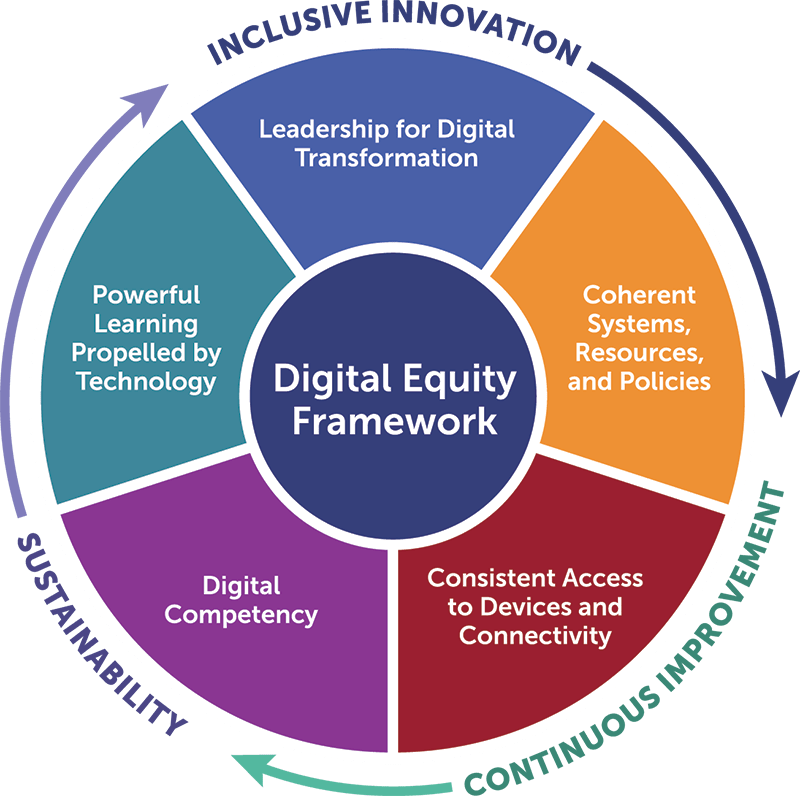Building on the U.S. Department of Education’s National Educational Technology Plan, we also identify three commonplace gaps that impact digital equity for AI and all emerging educational technologies: gaps in access, design, and use.
As generative AI technology rapidly enters the classroom, we must ensure safe access to this new technology, and that the design of AI in education addresses learner variability and is responsive to students’ needs, strengths, and backgrounds. We must also address historic and systematic patterns that have blocked students from opportunities to learn in the past and ensure that use of AI is fair and equitable for all students.
Digital Promise works with educational leaders to implement a systems change approach to both AI and digital equity. To achieve what our society urgently needs, five factors must be simultaneously addressed:

Learn more in this blog post from Digital Promise’s Co-Executive Director of Learning Sciences, Jeremy Roschelle, and Chief Digital Equity Officer, D’Andre Weaver.